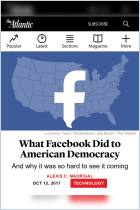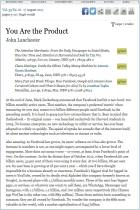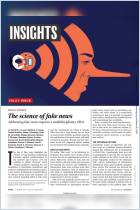
Article
The Rise of the Like Economy
Once a cursed project, the tiny feature has had a huge effect not only on the site, but on us
Medium,
2017
Read or listen offline
Amazon Kindle
автоматическое преобразование текста в аудио
1×
Войдите, чтобы прослушать аудиоверсию краткого изложения.
автоматическое преобразование текста в аудио
Recommendation
Have you ever peered over the shoulder of a Facebook-using friend only to be astounded at how his or her newsfeed differs from your own? In this article, Victor Luckerson from The Ringer provides a rundown of the unintended consequences of Facebook’s like button, along with some inside stories about its creation. getAbstract recommends this summary to Facebook users interested in the site’s decision to move away from its traditional “let the user decide” algorithm and take a more hands-on approach to your newsfeed display.
Summary
About the Author
Victor Luckerson is a staff writer at The Ringer. He writes about consumer technology, culture and politics.
Learners who read this summary also read
Article
Video
Article
Article

















Comment on this summary or Начать обсуждение